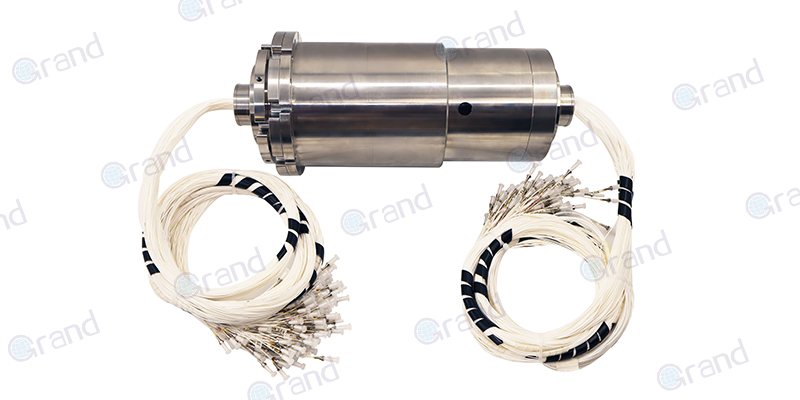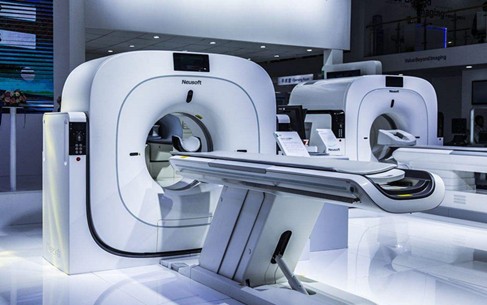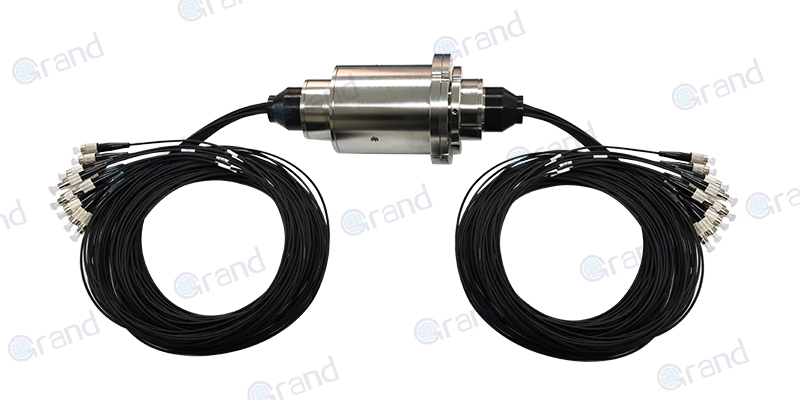Step into the world of brushless ring motors, the silent performers that play a pivotal role in driving various machines across different industrial sectors. This article aims to elucidate the key concepts around brushless ring motors including their design, working principle, benefits, applications, and the precautions to keep them running efficiently.
Brushless Ring Motor Introduction
Overview of Brushless Ring Motor
A brushless ring motor is an innovative type of electric motor that uses brushless technology and a unique toroidal design. In this type of motor, the rotor ring which consists of permanent magnets, rotates around the centrally located stator. The elimination of brushes significantly reduces mechanical friction and wear, thus extending the motor’s life and enhancing its efficiency.
This motor design features a large contact surface between the rotor and the stator, ensuring smooth operation and optimal torque delivery. Furthermore, due to its brushless nature, the motor exhibits minimal heat generation and noise production, making it highly suitable for various applications that demand precise control and minimal vibrations.
Context on Where and Why It’s Used
Brushless ring motors are used across multiple industries and applications due to their exceptional performance and unique design features that stand out from their conventional counterparts. Their high efficiency, low maintenance, and ability to deliver substantial torque make them remarkably versatile. Moreover, the absence of friction due to brushes ensures a longer lifespan and improved reliability, which are essential characteristics in countless applications.
Some of the key sectors that employ brushless ring motors include:
- Industrial Automation: Brushless ring motors are utilized in production lines, conveyor systems, and quality control, providing precise control and dependable performance needed for various processes.
- Robotics: The demand for high torque and precision control in robotic systems, especially in applications employing complex movements and manipulations, has led to the growing integration of brushless ring motors.
- Electric Vehicles: These motors offer enhanced efficiency, lightweight design, and compactness required in electric vehicle propulsion systems.
- Drones and Aerial Systems: Due to their minimal vibration and noise production, brushless ring motors are a suitable choice for drone motors, allowing better stability and flight control.
- Medical and Healthcare Devices: These motors are incorporated into precision medical devices and equipment, such as surgical tools and imaging systems, for their low noise output and accurate control.
Overall, the brushless ring motor’s connectivity, reliability, and high-performance attributes make it a popular option in numerous industries and applications, that strive to optimize operational efficiency and productivity. Its compatibility with current and future technology trends demonstrates its potential for even broader application horizons in the years to come.

Brushless Ring Motor Design and Functionality
Detailed Explanation of the Design and Components
At the core of a brushless ring motor’s design are two principal components: the rotor and the stator.
The rotor is a ring-shaped component comprising permanent magnets, and it’s typically the external, mobile part of the motor. The ring-like construction allows for an extensive contact surface with the stator, resulting in efficient power transmission.
The stator, in contrast, consists of a set of coil windings and is located internally and centrally. The stator windings generate a rotating magnetic field when electric current is applied. The magnetic interaction between the stator and rotor drives the rotation of the rotor.
Electronics associated with a brushless ring motor include a controller and sensors. The controller manages the power supply to the stator windings and sequences the firing of each phase to provoke rotation. Typically, sensors, such as Hall-effect sensors, are used to detect the rotor position ensuring that the controller fires the stator’s phases in the correct sequence.
The build materials are also an essential consideration in the design of brushless ring motors, affecting overall performance, efficiency, and durability. High-grade magnets, windings, and housing materials help enhance power output, withstand high rotational speeds, and tolerate varying operating conditions.
Explanation of How it Operates and How it Differs from Brushed Motors
Brushless ring motors operate on a simple yet effective principle. The controller initiates a current through the stator windings, which then generates an electromagnetic field. This magnetic field interacts with the magnetic field produced by the rotor’s permanent magnets, creating a force that causes the rotor to spin.
A distinct aspect of brushless ring motors is their exceptionally high torque at low speeds due to their ring design, which allows for a larger active motor area and closer proximity of the magnets to the stator. The large active motor area ensures that a greater portion of the applied current turns into useful work, leading to high torque and power output.
When we compare brushless ring motors to traditional brushed motors, the most striking difference is the absence of brushes and the commutator assembly in brushless motors. In brushed motors, these components are integral to operation as they facilitate current supply to the rotor. However, they can cause friction loss, wear and tear, and necessitate regular maintenance.
On the other hand, brushless ring motors eliminate these issues by employing electronic controllers for current supply to the stationary windings in the stator, leading to improved efficiency, longer lifespan, quiet operation, and reduced maintenance needs. Moreover, the unique design of ring motors ensures a higher surface area for magnetic interaction, resulting in larger torque output and superior overall performance.
Advantages of Brushless Ring Motors
Higher Efficiency in Terms of Energy Use
Brushless ring motors are recognized for their superior energy efficiency. This higher efficiency results from their brushless design that eliminates the losses associated with friction and heat generation in brushed motors. By using electronic controllers to precisely control the current supply to the stator’s stationary windings, brushless motors significantly improve the conversion of electrical energy into mechanical energy.
The unique design of brushless ring motors, which encompass a larger active area because of the ring-shaped rotor, further boosts their efficiency. The larger active area ensures a greater amount of applied current is utilized for useful work, thereby enhancing the motor’s operational efficiency.
Low Maintenance Requirements
One notable advantage of brushless ring motors is their minimal maintenance requirements. The absence of brushes and a commutator assembly eliminates issues associated with mechanical wear and tear. This design feature means there’s no need for regular replacements or checkups associated with brushes, drastically reducing downtime and maintenance costs.
Moreover, due to the inherent design and operating principle, brushless ring motors produce less heat and noise. This results in fewer strain and potential problem points, thus extending the overall motor lifespan and further reducing maintenance needs.
Enhanced Performance Characteristics – Torque, Speed Control, and Longevity
Brushless ring motors provide elevated performance in terms of torque, speed control, and longevity, making them the motor of choice for many applications.
- High Torque: The distinctive design of brushless ring motors allows for a larger area for magnetic interaction between the stator and rotor, yielding higher torque. This torque advantage particularly shines through at low speeds, and it’s a key reason these motors are chosen for applications that require high torque right from a standstill or at low operational speeds.
- Improved Speed Control: Brushless ring motors excel in speed control due to the electronic controllers that manage the firing of the stator’s phases. The controllers ensure precise tuning of speed with consistency, enhancing positional accuracy and overall motor control, making these motors suitable for applications where precision control is pivotal.
- Longevity: The absence of brushes and the mechanical wear they cause lead to less maintenance, less downtime, and consequently an extended lifespan for brushless ring motors. Paired with reduced heat generation, these features result in a motor that is more durable and can perform optimally even in demanding conditions for extended periods.
In conclusion, the benefits of brushless ring motors in terms of higher energy efficiency, reduced maintenance requirements, and enhanced performance characteristics make them a superior performer. These advantages, driven by innovative design choices and advanced operational principles, deliver operational excellence and high value in a variety of applications across industries.
Applications of Brushless Ring Motors
Highlight Different Sectors Where These Motors are Used
Brushless ring motors have a broad spectrum of applications due to their unique design and superior performance characteristics. They are extensively used in sectors such as:
- Industrial Automation: In conveyor systems, production lines, and precision machinery, brushless ring motors play a critical role thanks to their precision control, reduced maintenance needs, and high efficiency.
- Robotics: In robotics – from industrial robots, and service robots to exploring robots, the motors’ high torque capabilities and excellent speed control are vital for precise and complex movement.
- Electric Vehicles: Brushless ring motors offer the lightweight, compact, and efficient solutions needed in electric vehicle powertrain systems, playing a significant role in energy conservation and performance enhancement in EVs.
- Drones and Aerial Systems: Due to their capacity to operate silently and generate negligible vibrations, brushless ring motors aid in stable and controlled flight for drones.
- Medical and Healthcare Devices: In devices requiring precision and silent operation — like surgical tools and medical imaging systems, brushless ring motors are a popular choice.

Discuss the Role and Impact of Brushless Ring Motors in These Sectors
Let’s delve into the significant contribution of brushless ring motors in these sectors:
- Industrial Automation: By providing consistent and precision control, brushless ring motors ensure the smooth, efficient operation of machinery, reducing energy costs and enhancing productivity. Their compact size also allows for more flexible production layouts.
- Robotics: The high torque at low operational speeds, paired with precise speed control, allows robots to perform complex maneuvers seamlessly. Furthermore, their longevity and dependability contribute to continuous, uninterrupted operation, essential for optimal productivity in industrial robotics.
- Electric Vehicles: Brushless ring motors provide superior energy efficiency, which directly translates into an extended driving range for electric vehicles. Their compact and lightweight characteristics also contribute to overall vehicle-saving weight, thus improving efficiency.
- Drones and Aerial Systems: The quiet operation and low vibration of brushless ring motors directly impact the stability of drone flight, capturing better quality images and videos. Further, the extended operating life of these motors contributes to extended flight times.
- Medical and Healthcare Devices: In sensitive medical applications, the noise and vibration-free operation of brushless ring motors ensures patient comfort and precision operation, directly contributing to improved patient care outcomes.
The pervasive impact of brushless ring motors across these sectors underscores their effectiveness and adaptability. They have a substantial role, in creating reliable, efficient, and high-performing technologies across a wide range of applications.
Choosing the Right Brushless Ring Motor
When choosing the right brushless ring motor for a specific application, several considerations must be carefully studied to ensure optimal performance and cost efficiency.
Torque Requirements
One of the critical components to consider is the torque requirement of the application. Given their design, brushless ring motors can deliver a high amount of torque, especially at low speeds. Based on the load and operational conditions, the motor must be able to provide the necessary torque to drive the system effectively.
Power
Power is another vital factor. Not only should the motor produce sufficient power to perform the task at hand, but it should also do so efficiently to minimize energy waste. Keep in mind that a motor producing higher power will generally be larger and possibly more costly.
Price
Price is understandably a primary consideration. The cost of the motor should align with the budget while delivering the required performance. However, it’s crucial to think about long-term costs, too, such as energy consumption and maintenance, as a cheaper motor up front may end up costing more over its lifespan.
Speed Control
Brushless ring motors are known for their speed control precision, but different motor models can have varying degrees of speed control capabilities. For applications that require exact positioning and exquisite control, a motor with superior speed control should be prioritized.
Size
The physical size and weight of the motor are important when considering the motor’s integration into the system. Especially in applications where space is at a premium or weight is a factor, like in drone technologies or compact medical devices, a lighter and smaller motor can be beneficial.
Choosing the right brushless ring motor revolves around the careful evaluation of these and possibly other parameters like noise levels, heat generation, and environmental conditions. Understanding the specific requirements of the task at hand and how these factors impact system performance can help guide the selection of the apt brushless ring motor, and ultimately lead to a more productive and efficient operation.
Brushless Ring Motor Maintenance and Troubleshooting
Even though brushless ring motors are recognized for their low maintenance requirements, regular checkups and proper handling are crucial to guarantee their longevity and peak performance.
Maintaining a Brushless Ring Motor
Here are several maintenance tips for a brushless ring motor:
- Regular Inspection: Although brushless ring motors are free from brushes and commutators, which reduces most common motor failures, they should still be routinely inspected for any signs of wear or damage on the outer casing or connectors.
- Ideal Operating Range: The motor should be operated within the recommended speed and torque ranges to prevent excessive strain or heat generation that can degrade the motor’s performance or cause damage over time.
- Heat Management: Proper cooling mechanisms should be in place, especially in high-torque or high-speed applications, as excessive heat can harm the motor and its control elements.
- Handling and Storage: The motor should be properly handled and stored when not in use. Avoid storing it in extreme temperature conditions or in wet or dusty locations that can potentially cause harm.
Common Issues and Troubleshooting Methods
Though brushless ring motors are generally reliable, they might occasionally encounter issues. Here are some common problems and corresponding troubleshooting methods:
- Loss of Power or Efficiency: This could be due to bearing failure, loose connections, or power supply issues. Check all connections, test the power source, and replace the bearings if necessary.
- Overheating: This is usually caused by overloading, inadequate cooling, or operating beyond specified limits. Make sure the motor isn’t overloaded, ensure cooling mechanisms are adequate, and check the torque requirements.
- Inconsistent operation or Unstable Speeds: This could be an indication of a problem with the motor controller. Check the controller settings for any issues and look for firmware updates if needed.
Regular maintenance and troubleshooting, when done correctly and promptly, can extend the lifespan and enhance the performance of brushless ring motors. It is vital to follow guidelines provided by the motor manufacturer for explicit maintenance procedures and troubleshooting steps.
Brushless Ring Motor Future Trends and Developments
As technology continues to evolve, brushless ring motors are set to experience significant advancements in design and performance, not only catering to the demands of specific industries but also driving transformation across various applications.
Impact of Technology Advancements on Brushless Ring Motor Design
Several advancements will shape the future of brushless ring motors:
- Material Science: Ongoing developments in material science could lead to lighter, stronger, and more heat-resistant motor components, resulting in more compact and efficient brushless ring motors.
- Magnetic Technology: Improved magnet technology, specifically using high-energy rare-earth materials like neodymium, can lead to higher torque and performance capabilities while further reducing motor size.
- Digital Controllers and Artificial Intelligence: Enhanced digital controllers and the integration of AI-based solutions can offer more accurate and adaptable speed control, leading to better overall motor performance and improved energy efficiency.
- IoT and Connectivity: With the rise of IoT and advanced connectivity solutions, brushless ring motors can become an integral part of connected systems, enabling real-time monitoring, preventive maintenance, and seamless integration with other devices and controllers.
Future Challenges and Expectations in Related Industries
As brushless ring motor technology evolves, related industries must tackle new challenges and adapt to changing landscapes:
- Industry-Specific Requirements: As industries like robotics, electric vehicles, and medical devices adopt more advanced versions of brushless ring motors, they must optimize their systems and processes to extract their full potential. Adapting to these high-performance motors requires continuous innovation and a good understanding of their benefits and limitations.
- Environmental and Energy Efficiency Concerns: With an increased focus on energy efficiency and reducing carbon footprints, industries are forced to prioritize the optimization of their applications, making brushless ring motors an attractive choice. The motor development should cater to these concerns and meet stringent environmental regulations.
- Cost and Supply Chain Management: Rising raw material costs and supply chain uncertainties may impact the industry’s growth, and thus, manufacturers need to develop innovative solutions, secure materials, and optimize processes to ensure the production of high-quality, reliable motors at competitive prices.
- Workforce Development: The integration of AI, IoT, and other advanced technologies into brushless ring motor systems demands a workforce that is well-equipped to handle these new capabilities. Bridging the skills gap and training personnel will be crucial in managing and leveraging these innovative technologies.
The future of brushless ring motors presents an array of new opportunities and challenges. By staying at the forefront of technological advancements, embracing industry-specific requirements, and addressing environmental, cost, and workforce concerns, manufacturers can ensure ongoing growth and success in the market for these advanced motor solutions.
Conclusion
Brushless ring motors stand out for their design, performance, and industry-wide acceptance, poised to ride the wave of future advancements in technology. Their influence extends across industries and applications, bringing efficiency, reliability, and high performance to numerous systems and devices.
See What We Can Do

